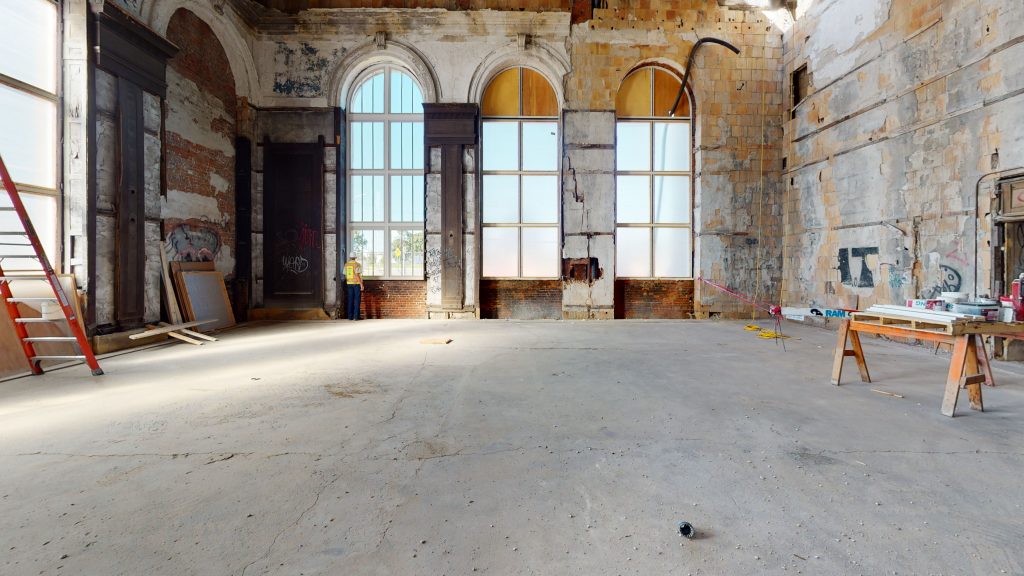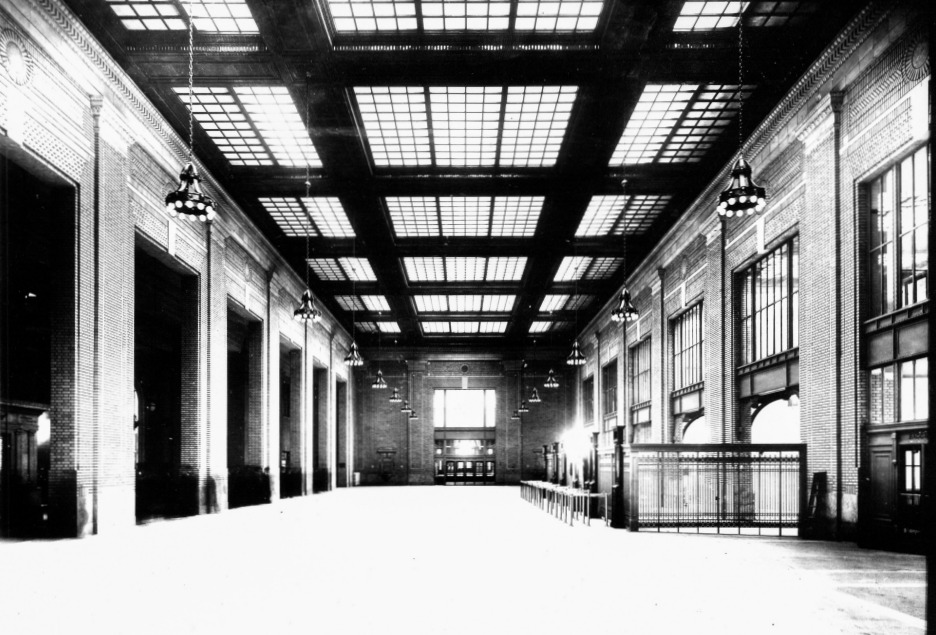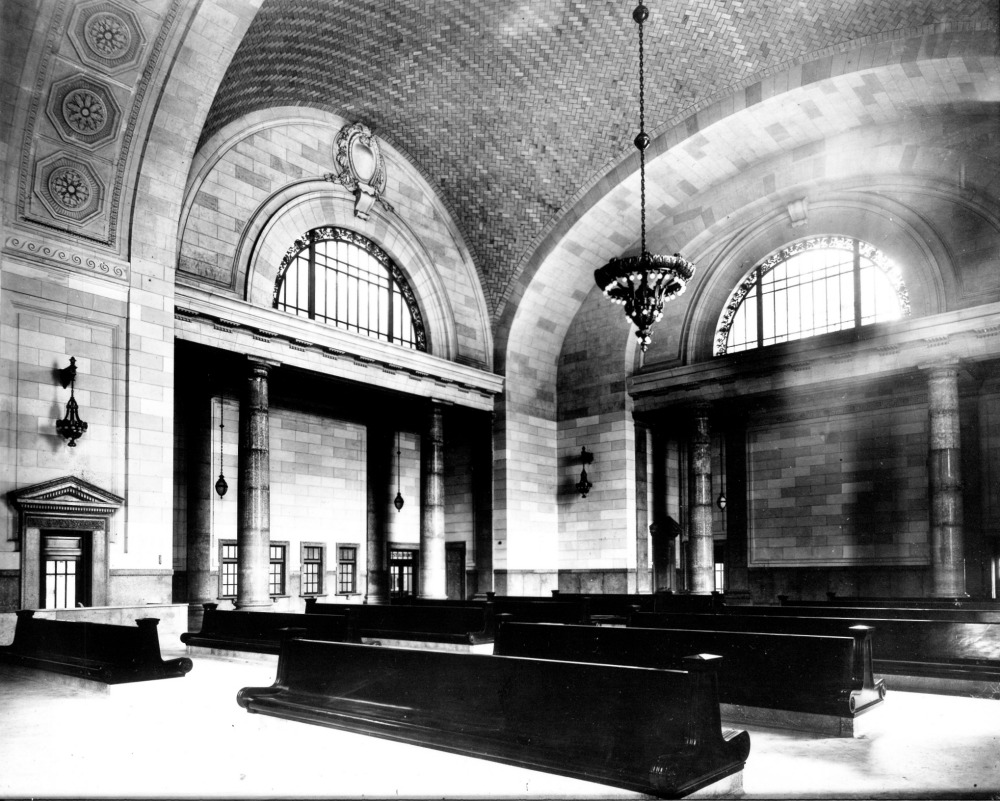Inside Ford’s Transformation of Michigan Central Station
In September 2020, we got a chance to get a look at the inside of the historic Michigan Central Station currently being redeveloped by Ford. The company is spearheading a comprehensive renovation of the 1913, Beaux-Arts building and its surroundings as part of a monumental development project that will transform several dozen acres of Detroit’s Corktown neighborhood south of Michigan Avenue into a mobility innovation district. The project will restore the building to its original architectural splendor and functional vibrancy, and will be again opened up to the public with a combination of retail and restaurants, hospitality space, arts and cultural functions, and community space. The restoration work is expected to be completed by 2022.

The men’s waiting room, also known as the “reading room.” At left is the mockup window restoration that is expected to be used in similar window bays. 
The restaurant, with its vaulted ceiling. The restaurant featured a lunch counter in front and a more formal dining space in the “rear” of the space, closer to the windows. 
The restaurant in Michigan Central Station features perhaps some of the most elegant graffiti in the building.
The ambitious Michigan Central Station project follows the development of “The Factory,” an old hosiery factory on Michigan Avenue, which marked Ford’s first significant new workforce presence in Detroit proper in many years. The Factory is home to 250 members of Ford’s autonomous (self-driving) vehicle team. Ford and its partner Argo AI can be seen testing autonomous vehicles on the streets of Corktown.
The mobility hub will also include the Detroit Public Schools Book Depository on 14th St., which sat vacant for many years under the stewardship of Moroun the Elder, and the since-demolished Lincoln Brass Works (“Brass Factory”) site on Rosa Parks Blvd., a contaminated mess of a site that comprised a factory complex built up over many years quite literally around an existing historic home. Ford plans to redevelop the Book Depository into a mix of office, maker space, and technology spaces for entrepreneurs, startups, and established companies when it opens in the first half of 2022.

A billboard of the Detroit skyline hangs in the original concourse space. (Burton Historical Collection, Detroit Public Library) 
The concourse. (Burton Historical Collection, Detroit Public Library) 
The main hall of the waiting room. (Burton Historical Collection, Detroit Public Library)
Extensive modifications to the public right-of-way including the streetscape and Roosevelt Park around the train station, most of which comprises city-owned land, are also likely, given the heavily deteriorated sidewalks and (frankly needlessly) wide thoroughfares. Vernor currently hosts 3-4 lanes northbound and 3 lanes southbound, while 14th St. includes two driving lanes and two parking lanes, and more streets abound on the western edge of the park.
THE SPACES
The space is broken down into two “Spaces” on the Matterport server. The first Space is the entire first floor of the train station, while the second is the 6th floor in the “tower” of the building. While the sixth floor is all open, the first floor involves many nooks and crannies. Be sure to check out all of the historic photos embedded into the model, which highlight the original restaurant space, the original ticket counters, the concourse, elevator banks, arcade, waiting room, and more. There are also a few “360°” images contained in the first floor, which can be accessed from the center of the main hall, right in front of the main entrance. These 360° images did not fit into the model itself because they are located on top of a massive assembly of scaffolding– being used to restore the waiting room’s historic Guastavino tile vaulted ceilings.









